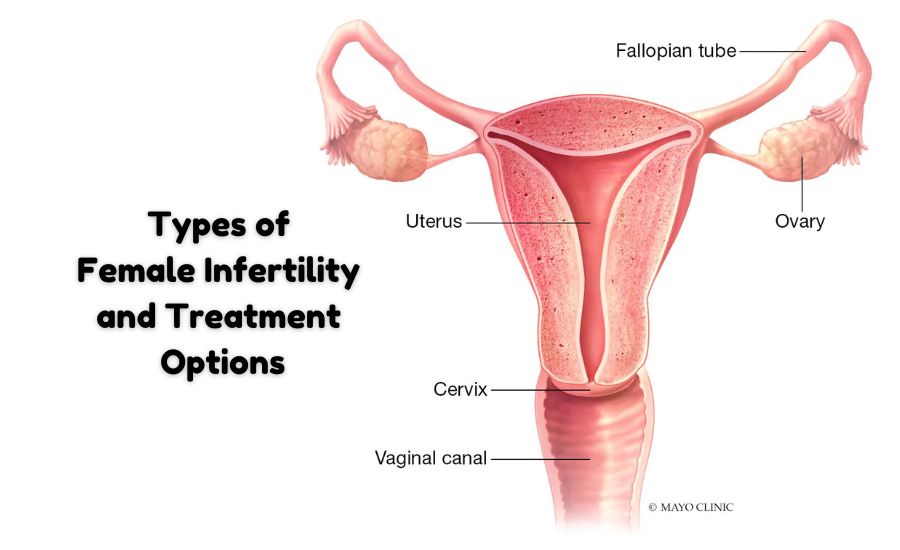Female infertility is a complex disorder resulting from factors that affect the reproductive system. Hormonal imbalances, structural problems of the reproductive organs, and sometimes no apparent cause can all lead to infertility. Treatment options such as in vitro fertilization (IVF) offer one solution to infertility. Here are different types of infertility and treatments available that help to increase the chances of a successful pregnancy:
Ovulatory Disorders
Ovulatory disorders include conditions in which ovulation is irregular or absent and make it difficult to conceive. Hormonal imbalances, stress, episodes of excessive weight gain or loss, or other conditions such as thyroid disorders can all impact ovulation. You might have irregular periods or not have periods at all.
Clomiphene citrate and letrozole are medications that are usually used to start treatment, as they stimulate ovulation. Where insulin resistance is also a problem, experts may prescribe metformin. In case medications do not produce appropriate effects, assisted reproductive technologies (ART) such as in vitro fertilization are recommended.
Polycystic Ovary Syndrome (PCOS)
PCOS is a common hormonal disorder that can hinder ovulation and affect your periods and fertility. PCOS is related to ovaries that produce small cysts, high levels of androgens (male hormones), and insulin resistance in women. Treatment involves attempting to regulate ovulation with medications called clomiphene, letrozole, or gonadotropins. Insulin-resistant people can take metformin to improve ovulation and insulin sensitivity. Changing your lifestyle by losing weight and exercising regularly may also help treat PCOS. Another option for women who don’t respond to medication alone is IVF treatments.
Tubal Infertility
Blockage or damage to the fallopian tubes makes it difficult or impossible for the egg to reach the uterus. Common causes are infections such as pelvic inflammatory disease (PID), previous surgery, or ectopic pregnancy. Tubal damage may be diagnosed during hysterosalpingography (HSG) or laparoscopy. Minor tubal damage or blocked tubes might be fixed during surgery.
Endometriosis
With endometriosis, tissues similar to the lining of the uterus grow outside the uterus. This tissue can inflame the ovaries, fallopian tubes, and other pelvic organs, resulting in scarring. Painful periods, chronic pelvic pain, and infertility are symptoms of endometriosis. Endometrial tissue is often removed through laparoscopic surgery, and removing it may help a woman’s chance of becoming pregnant. Treatment to suppress endometriosis growth includes hormonal treatments, although they don’t cure this condition. For severe situations, IVF may help a woman achieve pregnancy despite her endometriosis.
Cervical or Uterine Problems
Fibroids, polyps, adhesions, or structural malformations of the uterus are uterine or cervical abnormalities. Sometimes, these problems can prevent embryos from implanting or a woman from carrying a pregnancy. The type of abnormality determines the best treatment option. Often, fibroids and polyps are removed by minimally invasive surgeries, like hysteroscopy or myomectomy.
Try IVF to Treat Your Infertility
Infertility is a significant challenge for many women and couples, but due to modern solutions, women have various treatment options. Whether the best approach is with medications, surgery, or IVF, accurate diagnosis is key to picking the most appropriate choice. IVF increases the chances of pregnancy for many women by going around natural obstacles to conception. Contact a professional who can offer the proper support and medical interventions.
You Should Know: Causes of Varicose Veins


